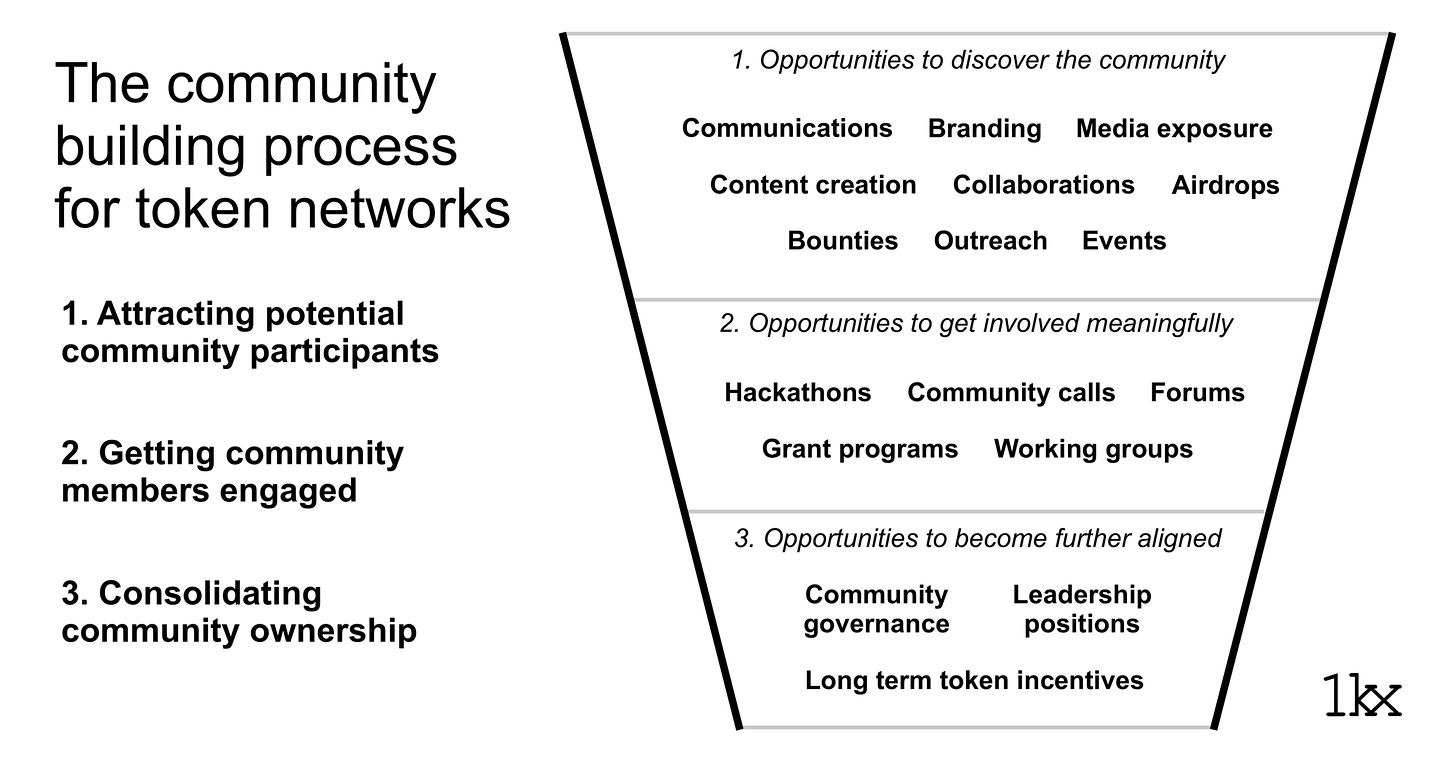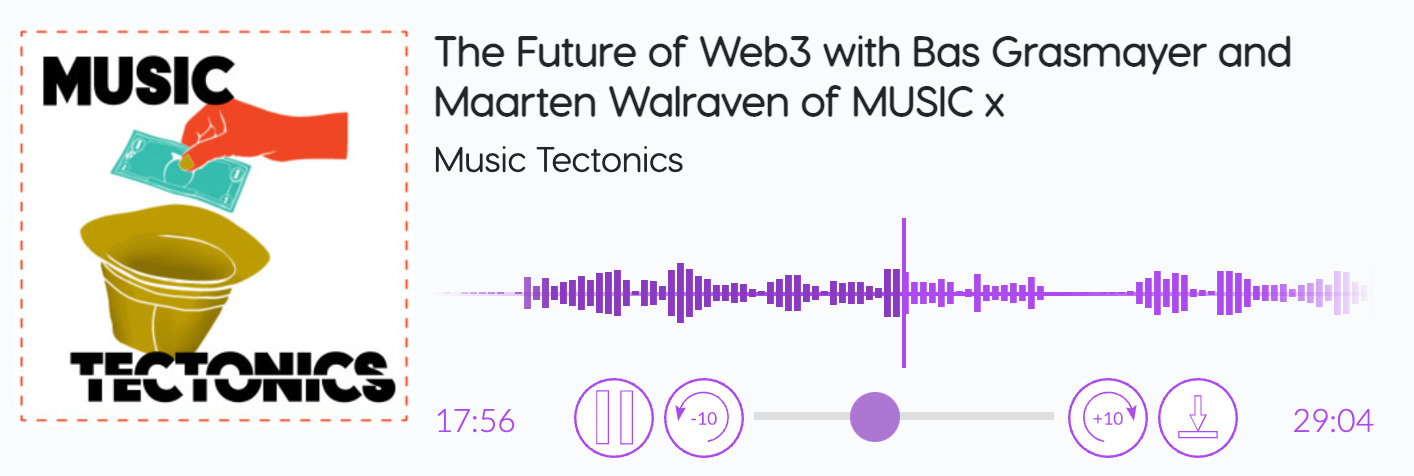✖️ Onboarding: the key to long-term sustainable communities
And: Our podcast episode about music x web3; HEAT's dance move marketplace; Bespoke visual noise; You should listen to CDs; Web3 or dWeb?
This one is for all my fellow community builders out there.
The key ingredient that makes community work is engagement. When engagement drops in your community, it withers. The same goes for subsections of your community. An easy example most of us will be familiar with is a channel on Slack or Discord that once served a good purpose, but now draws little to no interaction. The core community around it has moved on and so it becomes stale until it’s shut down or forgotten.
What drives engagement? This will depend on the community and is purpose. Some communities benefit from daily interaction, while some can do with a monthly or even annual meetup to keep members engaged. A similar question to which the answer is the same: how do you measure engagement? Community builders should understand what people are trying to get out of the community, what unique opportunities this community provides, and what the value add of community is vs going it alone.
Once you understand your community goals, you can map your engagement model. Many online communities will have open weekly calls, which serve as a vibe check, method to create overview, onboarding tool and just a general way to get everyone in the room regularly. Songcamp’s weekly ‘heartbeat call’ every Monday comes to mind - which is considered so crucial it’s even listed in their Twitter bio.
You want to get a sense of what the key actions are that engaged members should perform. Can be as simple as showing up to soccer practice every week, but can also be more complex when a community functions more like a team working on a project.
The key to long-term success for communities is retention. You want members to stick around; you want them to stay engaged. Long-term, that means some members will want progression, they’ll want to get more involved, do harder things. That’s not true for everyone though - some people will want to stay where they are. You need to optimize for both. Recommended reading: pet3rpan’s thoughts about growing decentralized communities and Alex Zhang’s reflections on the FWB DAO. (disclosure: I hold FWB tokens)
Let’s keep it simple now, however.
You need to identify the early actions for people to stick. How often should people be showing up in order for them to be engaged and to retain, so that they build connections with other people in the community? This last part is important: unless you know people in a community, joining a new community feels like walking into a room full of strangers. This can give a pronounced sense of not being part of this community. You want to break people out of that as fast as you can. What is the cadence at which they need to check in? Do people benefit from daily interaction? Weekly? What should that interaction typically look like?
More questions: When people join, when is the next time they should come back? How do you get them to do that? What are the actions they should perform on their first day to understand what the community is about and perceive the value of it? How do you get them to perform these actions? What about the next time they return?
To build a long-term, sustainable and healthy community, the moment of onboarding is crucial. How do you guide people towards being a retained and engaged community member? Define the key actions. Define what people need to know or experience in their first session. Understand that everyone is busy. With multi-billion dollar companies competing for our attention, how will you hold enough of a person’s attention for them to return another day? Define it.
Through community design, like setting up the right tools, structure, and appointing or empowering organic community builders, you can craft an onboarding process that helps people get to the answers to the above questions faster. When they get there faster, it means more people will get there, because people inevitably drop off over time - never to return. Before people get it, maybe 90% of folks will drop off over a certain time period. Once people get it, that could be as low as 20%.
Summarised:
Find out: What are the key actions that people who retain long-term perform on their first day?
Find out: If more people perform those actions, do they also retain better? In other words: do these actions help people experience value straight away?
Then think beyond day 1: Why will people come back? When's the next time they check in? For what reason?
Build for that.
A nod to Pandy Marino, whose tweet inspired a response which turned into this article.
LINKS
🎙 The Future of Web3 with Bas Grasmayer and Maarten Walraven of MUSIC x (Music Tectonics)
Podcast time! Thanks Tristra & the Music Tectonics crew for interviewing us just before the end of the year. Our first joint session. Fun fact: Maarten and I have actually never met in person, since we started collaborating during the pandemic.
Stream it via the link above or on Spotify here.
🧐 My first impressions of web3 (Moxie Marlinspike)
Fascinating read by cryptographer and founder of secure messaging app Signal, Moxie Marlinspike. He raises valid concerns with the actual decentralized nature of the web3, pointing out that many crypto wallets use OpenSea’s API to grab metadata for NFTs. He made an NFT that would look different on various marketplaces. When it was taken down from OpenSea, it also stopped appearing in other places.
🕸 Questioning Web3 Framing (Peter Harris)
Peter Harris is the founder of Resonate, a music streaming cooperative.
“The problems with web3 aren’t just about the influence of the financial class that is now heavily influencing the space, but also the technology itself.”
💃 HEAT is a DAO that will let you bring your dance moves to blockchain & the metaverse (HEAT)
🖼 Bespoke visual noise is the next domain for Robert Henke (Peter Kirn)
Interesting read about some of what prolific artist & Ableton co-founder Robert Henke is up to these days.
💿 You Should Listen to CDs (Gilad Edelman)
“The current vogue for vinyl is an overcorrection. You don’t have to listen to the absolute least convenient music format to escape the prison of hyperconvenience.”
PATREON
MUSIC x is supported by an awesome community of Patreon members. Thank you. New supporters in italics.
Tim Degraye, Andraž, Andres Lauer, Andrew Apanov, Arjen van der Straaten, Bo Plantinga, C.Y., Carlo Kiksen, Cherie Hu, Chuck Fishman, Daniel Cutler, Deenah Bassiouny, Dick Huey, Eli Goldstein, Frank Kimenai, Greg LoPiccolo, Hunter Giles, James Keene, Jason Fahlstrom, Kalam Ali, Keagon Voyce, KHT, Lukas Hermeling, Maarten Walraven-Freeling, Marc Geiger, Martin Nedvěd, Martyn, Matthias Röder, Nicolás Madoery, Nur Al Habash, Paula Moore, Pete Cohen, Pietro Fuccio, Oskar Ekman, RDU 98.5FM, Rian, Richard Wernicke, Ro Halfhide, Sinh Blum, Takayuki Suzuki, Theo Ploeg, Tim Shaw, Tristra Yeager, Virgo Sillamaa, Will Cove.
Innovation thrives when information flows freely. MUSIC x will always be a free newsletter. If you can afford it, consider joining us on Patreon if the pricing makes sense compared to what you get out of this. You can also do us a favour by sharing the newsletter on your favourite Discord, Slack, Facebook, or LinkedIn community.
MUSIC
Really digging this newly minted music NFT by hiphop artist MELO-X: The Greatest.








